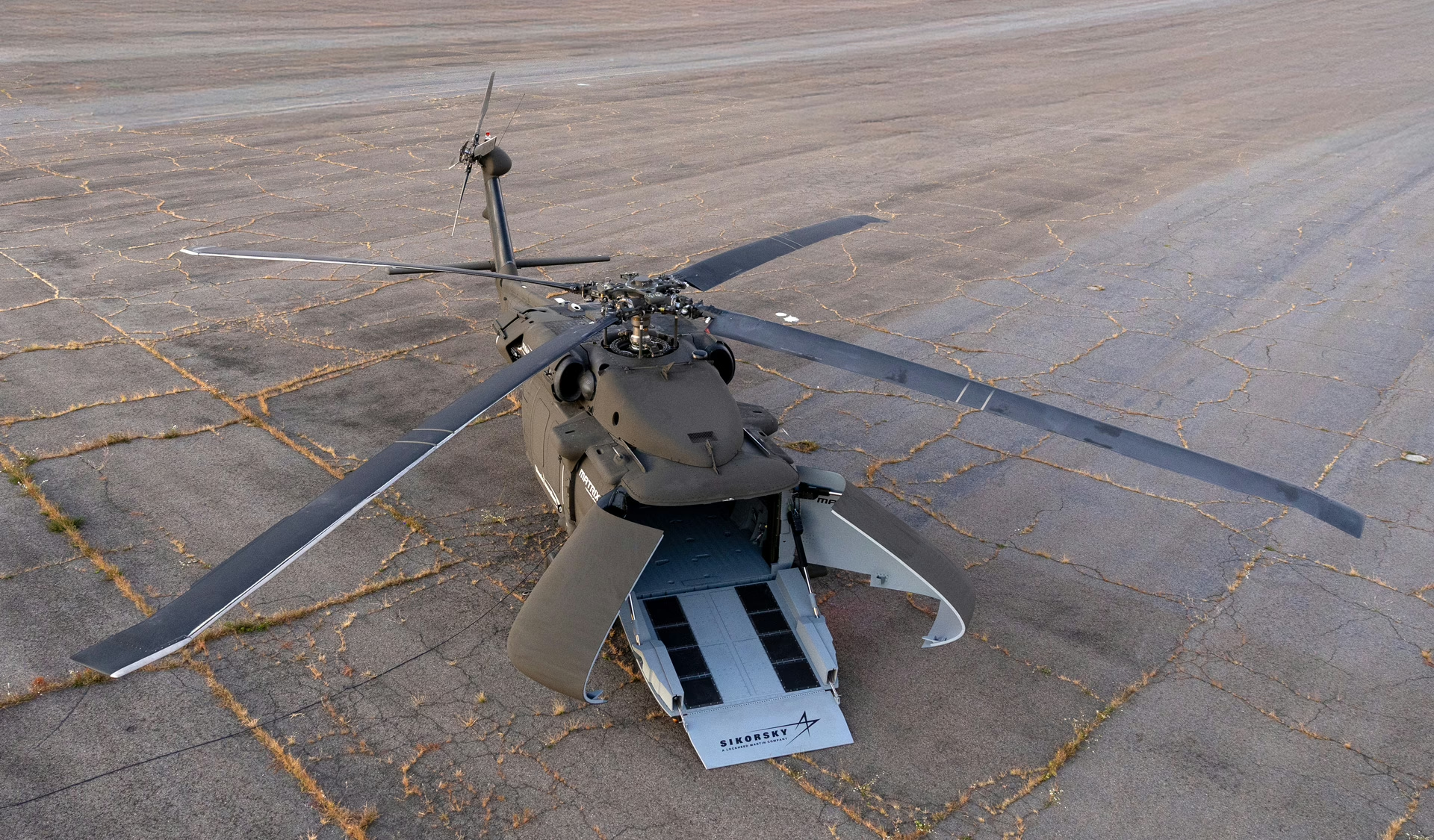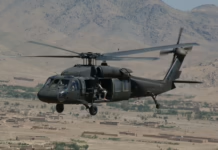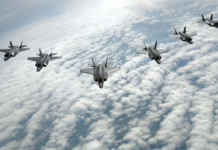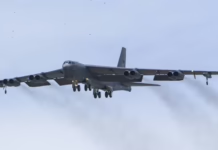Defense contractor transforms aging UH-60L models into uncrewed logistics aircraft as Army moves toward autonomous aviation
Sikorsky has developed an autonomous cargo helicopter using airframes from the U.S. Army’s retiring UH-60L Black Hawks, the company announced Monday at the Association of the U.S. Army conference in Washington.
The S-70UAS U-Hawk strips out pilot and crew stations from the legacy aircraft and replaces the cockpit with expanded cargo space. Clamshell doors on the modified nose allow rapid loading of equipment and supplies.
The company completed the prototype in under a year, according to Sikorsky general manager Rich Benton.
“We developed this prototype from concept to reality in under a year,” Benton said. “The modifications made to transform this crewed Black Hawk into a multi-mission payload UAS can be replicated at scale quickly and affordably.”
Army Aviation Overhaul Drives Development
The timing aligns with sweeping changes to Army aviation strategy announced earlier this year. The service plans to retire its fleet of UH-60L helicopters while embracing uncrewed systems to operate on future battlefields where conventional aircraft face increasing threats.
Sikorsky positions the conversion as a cost-effective solution that extends the usefulness of aircraft already in the Army’s inventory.
The company previously demonstrated autonomous flight capabilities to the U.S. Marine Corps as part of its Aerial Logistics Connector program. Unlike that optionally piloted prototype, the U-Hawk operates autonomously only.
Enhanced Cargo Capacity
Removing cockpit stations increases cargo volume by up to 25% compared to standard UH-60L helicopters. The aircraft accommodates roll-on/roll-off equipment through the nose ramp, designed specifically for deploying uncrewed ground vehicles.
Side doors on both sides of the main cabin allow traditional loading operations.
Internal cargo capacity reaches 7,000 pounds, while external sling loads can carry 9,000 pounds using a cargo hook. Combined internal and external loads max out at 10,000 pounds.
The U-Hawk can transport four Joint Modular Intermodal Containers, double the capacity of standard UH-60L helicopters. Large munitions including HIMARS rocket pods for Lockheed Martin artillery systems or two Kongsberg Naval Strike Missiles also fit aboard.
“The U-Hawk offers a cost-effective utility UAS by leveraging commonality with the existing UH-60 fleet, and its uncrewed nature reduces both operating and maintenance costs,” said Igor Cherepinsky, Sikorsky Innovations director.
Battlefield Applications
The aircraft features a 1,600-nautical-mile self-deployment range or can loiter for up to 14 hours without refueling.
Sikorsky envisions the U-Hawk deploying so-called launched effects — small uncrewed aerial systems that deliver various battlefield capabilities. The company is developing a “quiver” system mounted in the main cabin that holds 24 to 50 small- and medium-sized drones deployable through side doors.
Ramsey Bentley, Sikorsky’s director of advanced concepts and innovation, outlined how the aircraft might support air assault operations.
“You would envision the U-Hawk flying ahead of the soldiers,” Bentley said. “First it dispenses launched effects out the sides of the aircraft, out of our launch effects quiver. Then it lands, it disembarks the UGV and then the aircraft departs.”
He added: “And this is done ahead of any soldiers putting boots on ground.”
Larger launched effects vehicles would mount on external wings or pylons. Sikorsky is pursuing that integration work as part of broader UH-60 modernization efforts.
Manufacturing Efficiency
Cherepinsky noted the retrofit design prioritizes efficient production.
“We focused on efficiencies in the retrofit by designing and manufacturing vehicle management computers, actuation components and airframe modifications,” he said.
The company expects to complete the first U-Hawk demonstration flight in 2026.

Key Takeaways
- Sikorsky unveiled the S-70UAS U-Hawk, an autonomous cargo helicopter built from retiring UH-60L Black Hawk airframes, at the Association of the U.S. Army conference in Washington.
- The prototype was developed in under a year and offers 25% more cargo capacity than standard UH-60L helicopters, carrying up to 7,000 pounds internally or 9,000 pounds externally.
- The conversion aligns with the U.S. Army’s strategy to retire legacy aircraft while embracing uncrewed systems for future battlefields.
- The U-Hawk can deploy launched effects drones and unmanned ground vehicles ahead of troops, with a range of 1,600 nautical miles or 14-hour loiter capability.
- First demonstration flight is expected in 2026.








